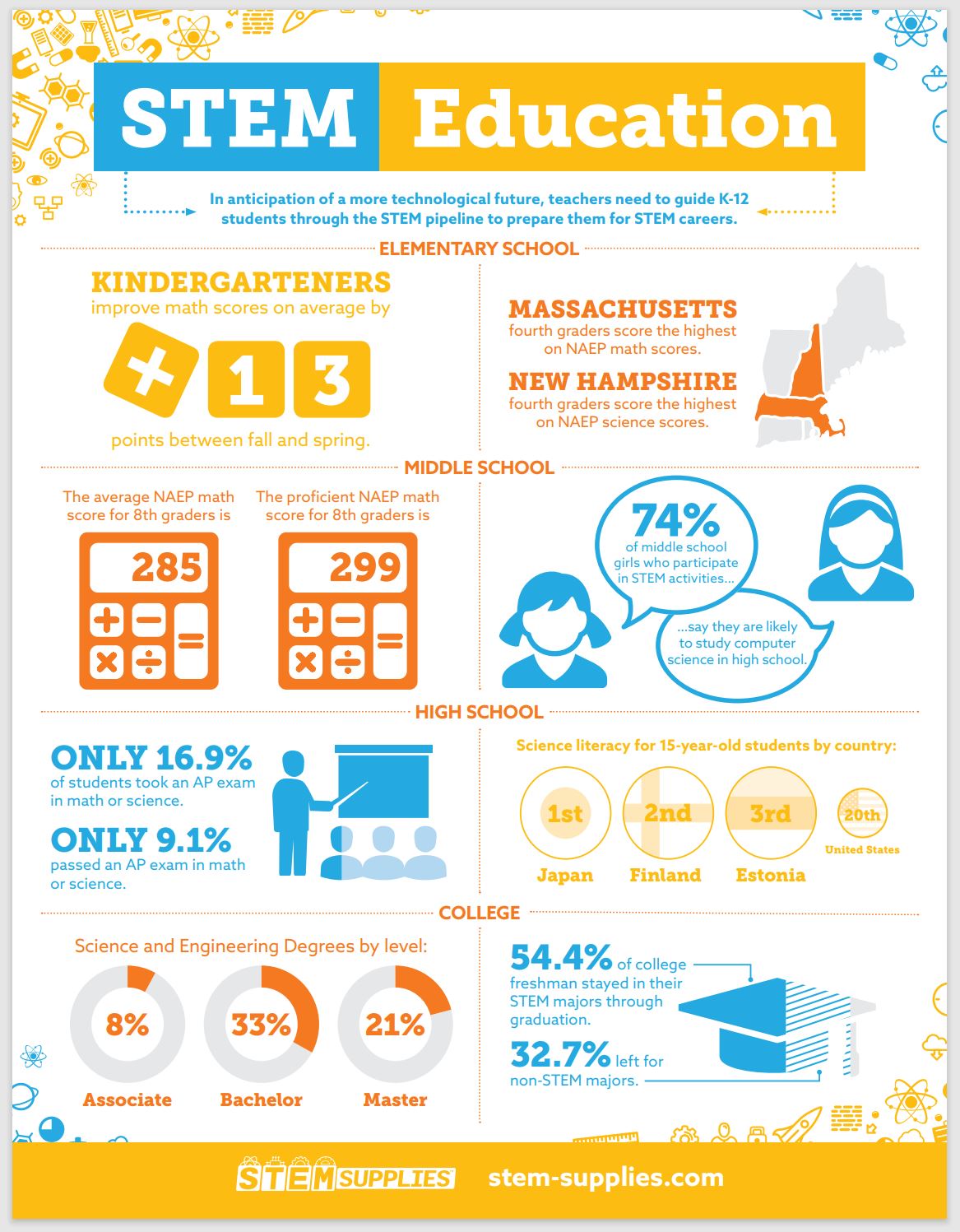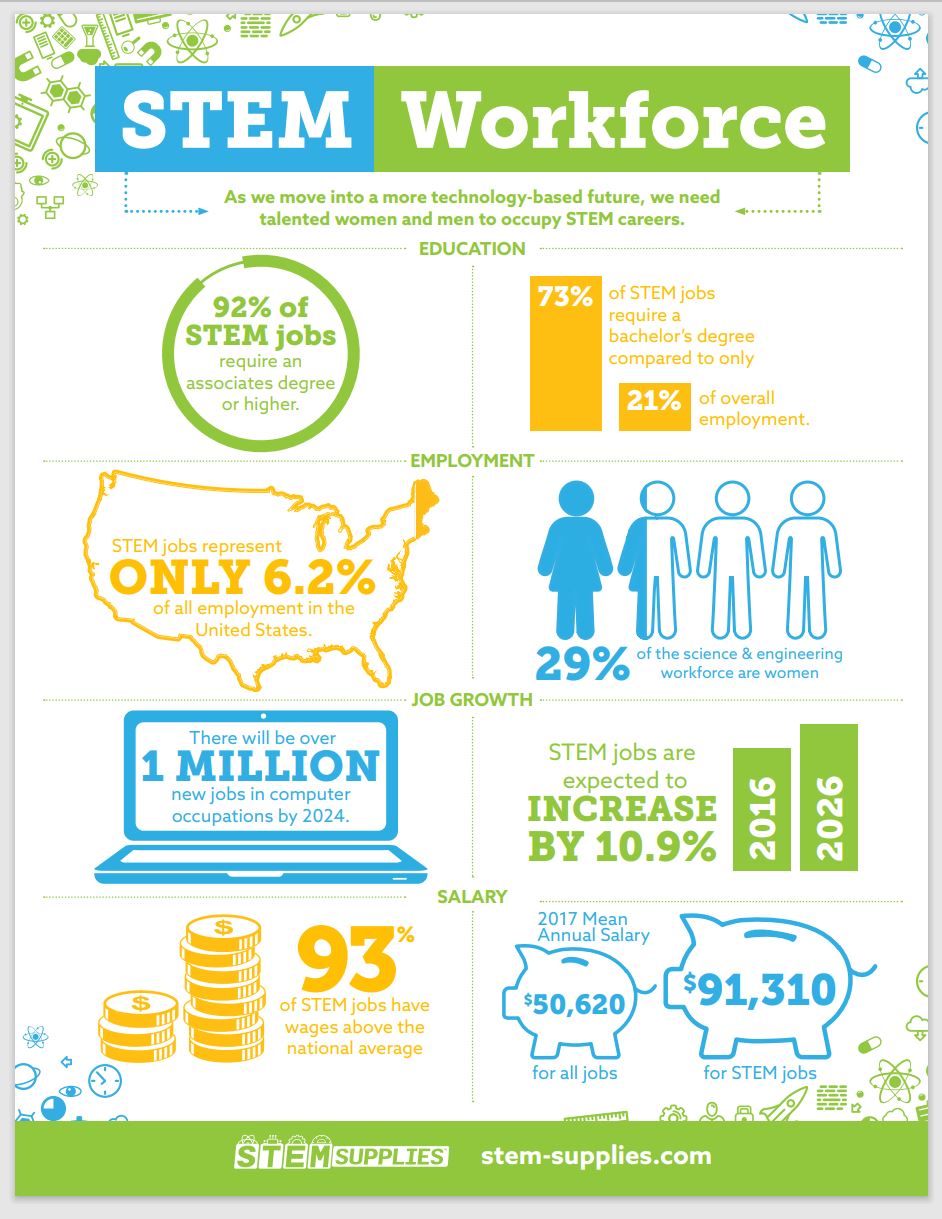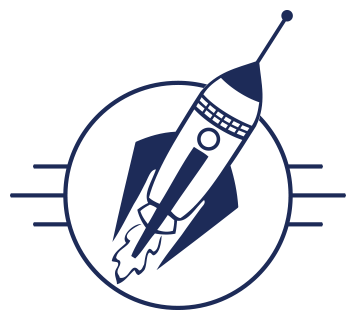STEM Education
Why STEM Education?


Why STEM education is important
September/October 2010
By Francis Eberle
Thirty five years ago, I entered the classroom as a young eighth-grade science teacher because science fascinates me. Letting students explore ideas in science and watching them learn is truly a passion that most science teachers share. It is inspiring to watch a student work through a science investigation and get to the "aha" moment of understanding, seeing their eyes light up, the smile broaden across their face, and the explosion of energy as they rush to explain to someone what they have just discovered.
Good science teachers capitalize on the "aha" moments and work hard to help students not only understand science, but also foster a lifelong learning in science. Why is this so important? Because science is the one subject that encompasses everything in life and helps students be curious, ask questions, and make connections as to why the world exists as it does. It is the backdrop for understanding our world, and helps us to explain and appreciate it in new ways.
Science is the "S' in STEM (Science, Technology, Engineering and Mathematics) education. We define STEM education as the preparation of students in competencies and skills in the four disciplines (science, technology, engineering, and math). A successful STEM education provides students with science, math, and engineering/technology in sequences that build upon each other and can be used with real-world applications.
STEM education creates critical thinkers, increases science literacy, and enables the next generation of innovators. Innovation leads to new products and processes that sustain our economy. This innovation and science literacy depends on a solid knowledge base in the STEM areas. It is clear that most jobs of the future will require a basic understanding of math and science-10-year employment projections by the U.S. Department of Labor show that of the 20 fastest growing occupations projected for 2014, 15 of them require significant mathematics or science preparation.
It is imperative that as a nation, we make STEM education a top priority. We have a lot of work to do. Consider this:
U.S. student achievement in mathematics and science is lagging behind students in much of Asia and Europe. International test scores tell us that in science U.S. eighth-graders were outperformed by eighth-grade students in Singapore, Chinese Taipei, Republic of Korea, Hong Kong SAR, Estonia, Japan, Hungary, and Netherlands.
In math, U.S. eighth-graders were outperformed by their peers in 14 countries: Singapore, Republic of Korea, Hong Kong SAR, Chinese Taipei, Japan, Belgium, Netherlands, Estonia, Hungary, Malaysia, Latvia, Russian Federation, Slovak Republic, and Australia.
The 2010 ACT College and Career Readiness report found only 29% of the tested 2010 graduates are considered college-ready in science and 43% are considered college-ready in math.
President Barack Obama has declared we need to increase student achievement in mathematics and science and expand STEM education and career opportunities to underrepresented groups, including women. In a speech at the National Academies of Science last April, Obama said, "Reaffirming and strengthening America's role as the world's engine of scientific discovery and technological innovation is essential to meeting the challenges of this century. That's why I am committed to making the improvement of STEM education over the next decade a national priority."
Obama's Educate to Innovate campaign is designed to lift American students to the top of the pack in science and math achievement over the next decade. The campaign involves public-private partnerships involving major companies, universities, foundations, non-profit organizations, and government agencies. One of the main goals of this campaign is to increase STEM literacy so all students have the opportunity to learn deeply and think critically in science, math, engineering, and technology. Funding will come from the many corporate, private, and foundation sponsors who are interested in taking part in the campaign efforts by serving students with their own initiatives.
The National Science Teachers Association (NSTA) fully supports Educate to Innovate and is a proud sponsor of National Lab Day (NLD), a cornerstone of Obama's initiative. NLD is a teacher-driven nationwide effort to build local communities of support between STEM professionals and STEM teachers that will foster ongoing collaborations to strengthen the education we provide to our students. Learn more at www.nationallabday.org.
To further support businesses and other stakeholders in efforts to establish a STEM pipeline, the STEM Education Coalition, advocates from over 1,000 diverse groups, works to raise awareness in Congress, the U.S. Department of Education, the National Science Foundation, and other agencies that offer STEM related programs. This coalition, co-chaired by NSTA, keeps the dialogue going between and among stakeholders and supports initiatives that strengthen K-12 STEM education. To learn more, go to www.stemedcoalition.org.
Increased commitment from businesses and other stakeholders that support STEM education is critical, now more than ever. STEM education creates the pipeline of future innovators that will move this country forward. Making STEM education a priority is important, for our nation's short and long-term future.
About the Author
Francis Eberle, Ph.D., is the executive director for the National Science Teachers Association.





